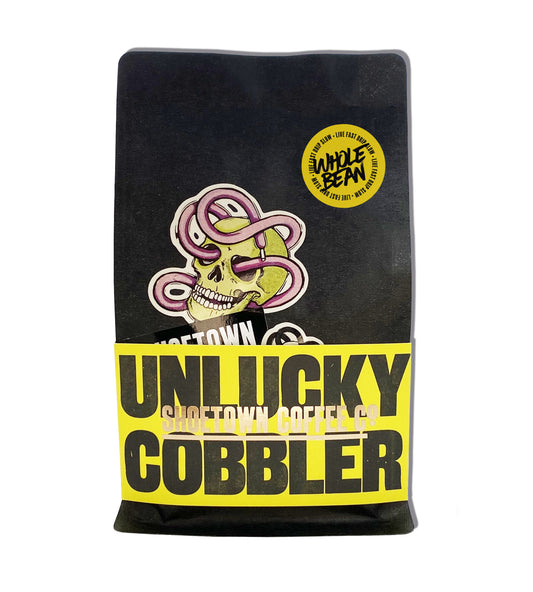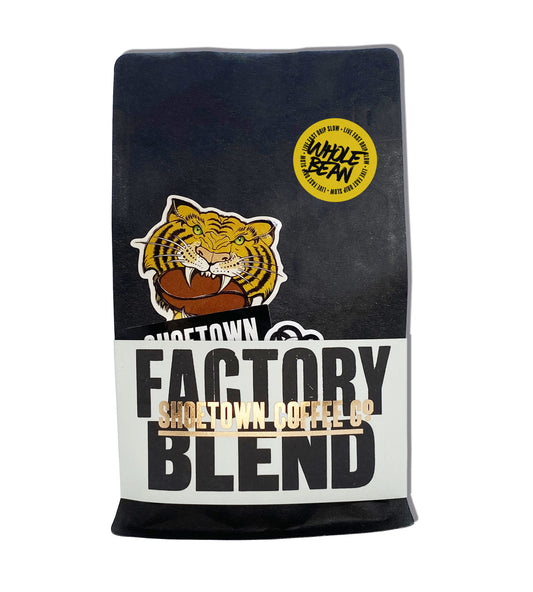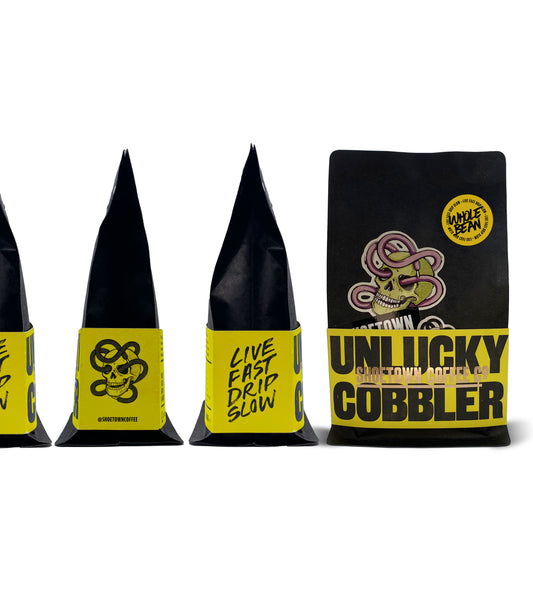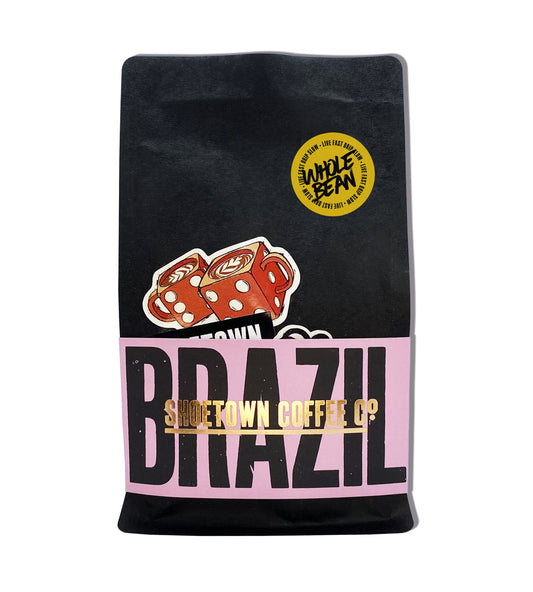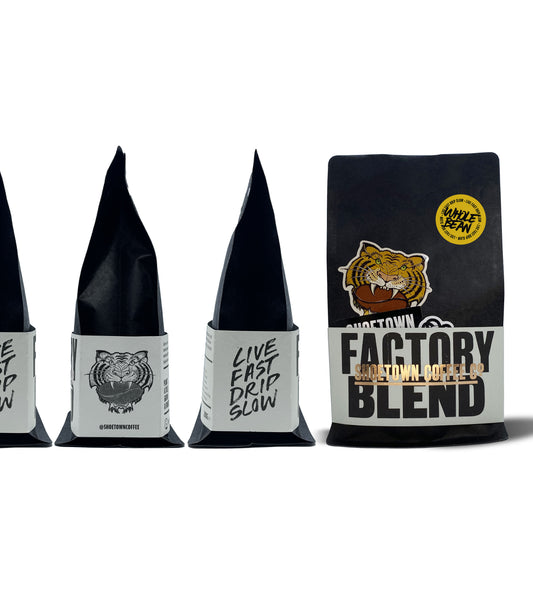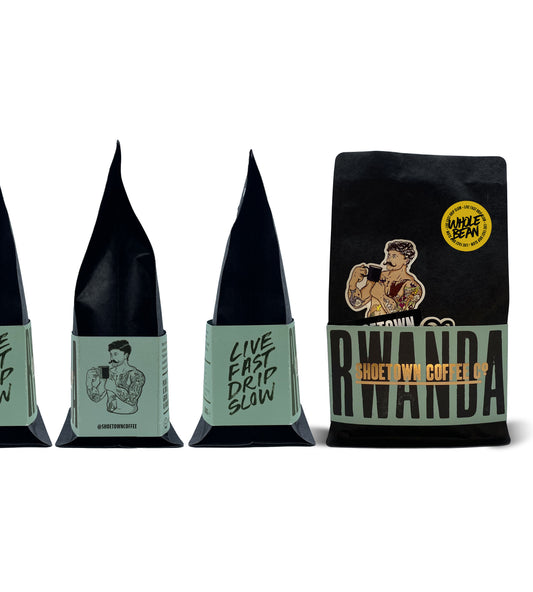Coffee Basics: Processing

Coffee Basics:
Processing
BY SHOETOWN COFFEE PUBLISHED SAT 23 MAR 25
How coffee gets its unique flavour's has a lot to do with how it’s processed. Essentially it’s how the bean is removed from the coffee cherry and gets dried. The cherry has several different layers, the skin, fruit, mucilage and parchment, these need to be removed to get to the coffee bean. There are three main ways to do this which is known as processing, with each process bringing something different to your final cup of coffee.
Each producer does something a little different and you’ll find the processing method varies from region to region, and even farm to farm with producers constantly experimenting with new techniques to bring out unique flavours. Let’s break these methods down; whats involved and what to expect in your cup of coffee.
💧 Washed or Wet Process
If you like a clean, bright, and crisp coffee, washed processing is the way to go. This method brings out a clarity of flavour like no other. The downside? It takes a lot of water, which means it’s mostly used in regions where water is plentiful. Plus, if the wastewater isn’t handled properly, it can cause some serious environmental issues—so responsible producers make sure to treat it before it goes back into rivers or streams.
What’s involved:
- Cherry flotation: Some producers start by tossing the cherries in water. Good ones sink, bad ones float. It’s an easy way to separate out the underripe and defective cherries.
- Depulping: A machine called a depulper then strips off the fruit, leaving the bean in just the parchment. Some machines are able to remove nearly all of the fruit, while others end up leaving some on.
- Fermentation: The beans are then put in water to ferment. Fermentation times will vary by region and desired flavour profile. In some cases, dry fermentation is used instead, with more and more producers experimenting with the fermentation stage using different techniques to produce new and exciting styles.
- Grading channels: After fermentation, the beans are rinsed and graded using water channels, separating the high-density beans from lower-quality ones.
- Drying: The beans are then dried on raised beds or patios until they reach the desired moisture content of around 10-11% with careful attention to temperature and airflow to prevent defects. During the drying process the beans will also be sorted by hand to remove any defects.
What to expect: Bright, clean, and juicy. Think floral notes and complex acidity—washed coffees tend to be super crisp and vibrant.
Washed coffees are produced across the globe, popular in the likes of Ethiopia, Colombia, and Rwanda and make up a lot of what we bring in.
🌞 Natural or Dry Process
Want big body and bold fruity flavours? Then natural is your go to. The natural or dry process is the oldest and although the most simple, if it’s not done quite right, it can produce some very poor coffee. In the natural process, the fruit doesn’t get removed before it’s dried which means the beans ferment inside the cherry. The drying stage can take several weeks and requires careful turning to avoid mould and over fermentation but when done well, this can produce incredible floral and fruity flavours like strawberry, peach and berries.
What’s involved:
- Hand-sorting: Cherries are carefully sorted by hand to remove any defective beans before drying.
- Drying: Whole cherries are laid out to dry either on raised beds or directly on the ground. This process can take several weeks, depending on the climate. Regular turning prevents mold and over-fermentation.
- Hulling: Once dried, the outer fruit is removed to reveal the green coffee bean inside.
What to expect: Big body, bold fruit flavors. Expect berries, stone fruits, and florals—when done well, natural coffees are bursting with character.
Natural processing enhances sweetness and body but requires dry conditions to prevent spoilage so it’s generally used in regions with low rainfall, like Ethiopia, Costa Rica and Nicaragua.
🍯 Honey or Pulped Natural Process
Looking for a sweet but balanced style? Give a honey a go. This method is a bit of a hybrid between washed and natural processing, reducing water usage and bringing out a mix of sweetness and fruitiness while still keeping things clean. The “honey” name comes from the sticky texture of the beans during drying—it’s not actually got anything to do with honey itself, though the finished coffee can have some sweet, syrupy flavors.
What’s involved:
- Sorting & depulping: Like in the washed process, the cherries are hand sorted and then run through a similar machine to remove the fruit, but instead of fully removing the mucilage, some of it is left on the bean which means less waters used.
- Drying: The beans are then laid out to dry on patios or raised beds. The exact way they are dried differs alot depending on the origin, in Brazil you’ll find they tend to use patios while Costa Rica tend to use raised beds, even the turning frequencies will differ each method brings something different to the style.
You may see different terms such as white or yellow honey and red or black honey, theres a bit of an argument to what this actually refers to as each producer uses this naming system in a different way. Some say it’s the amount of turns during the drying process, some, the amount of mucilage left on the bean but as a rule of thumb here’s a quick guide;
White/Yellow Honey: More turns or minimal mucilage, expect a cleaner, brighter flavour.
Red/Black Honey: Less turns or more mucilage, expect fruitier and more complex flavors.
What to expect: A mix of the best parts of washed and natural coffees—clean and bright but with more fruit and sweetness. The best ones have juicy fruit flavors with great body.
Because it requires less water than washed processing, honey processing is more environmentally friendly and results in a coffee with excellent body and fruity notes.
Final Thoughts
Coffee processing is a craft that shapes the flavors in your cup. We know growing exceptional coffees requires more work. Producers tirelessly tend to their coffee trees, hand-picking cherries at perfect ripeness, carefully processing the beans, and allowing them to develop over time. Their skill, craftsmanship, and attention to detail are the difference between mediocre coffee and high-grade specialty coffees. Whether you enjoy the crisp clarity of a washed coffee, the balanced sweetness of a honey process, or the bold fruitiness of a natural, it all comes down to what you like, there’s no right or wrong answer. And with producers constantly experimenting with fermentation techniques and hybrid methods, who knows what’s next?
Want to explore these coffee processing methods yourself? Try tasting different coffees side by side and see how each process shapes the final brew.

